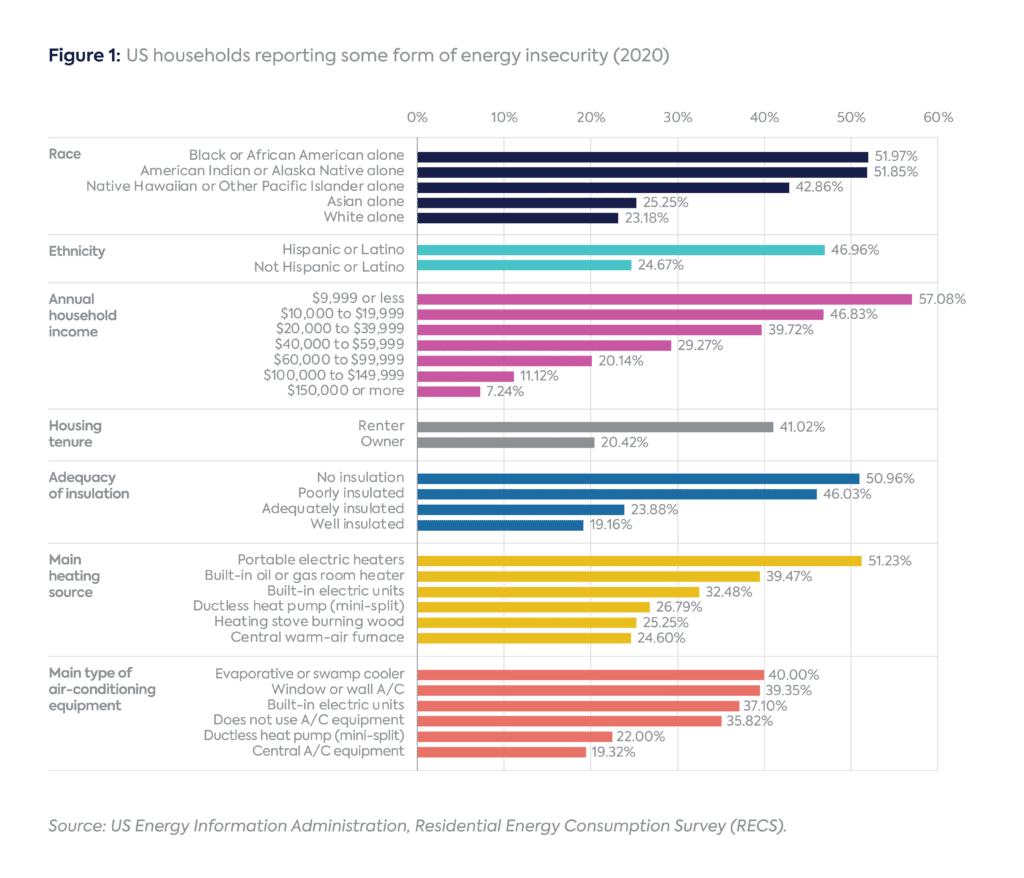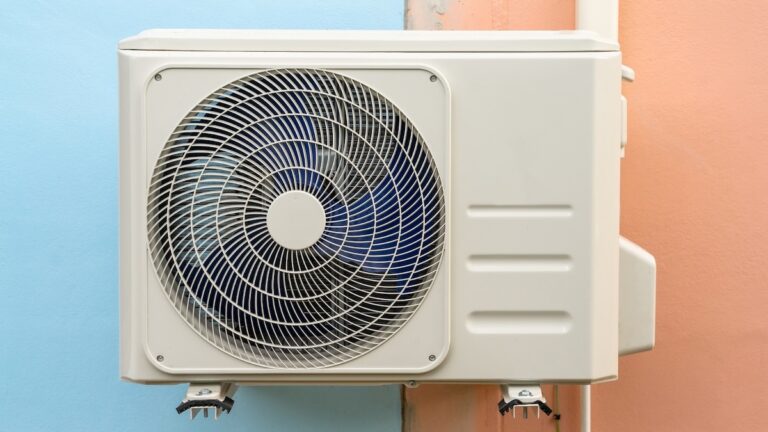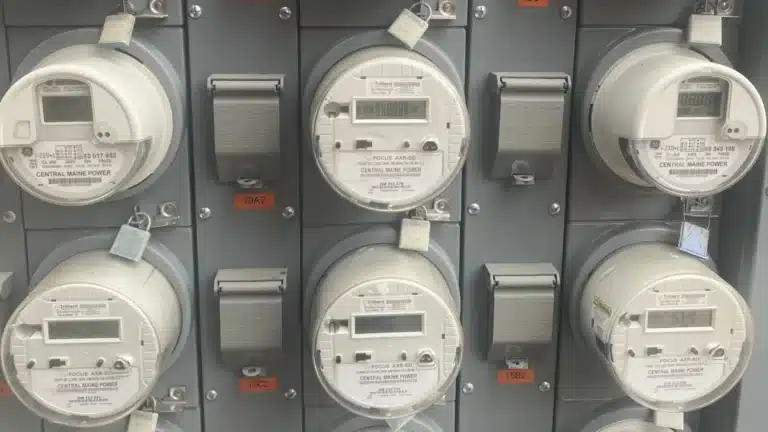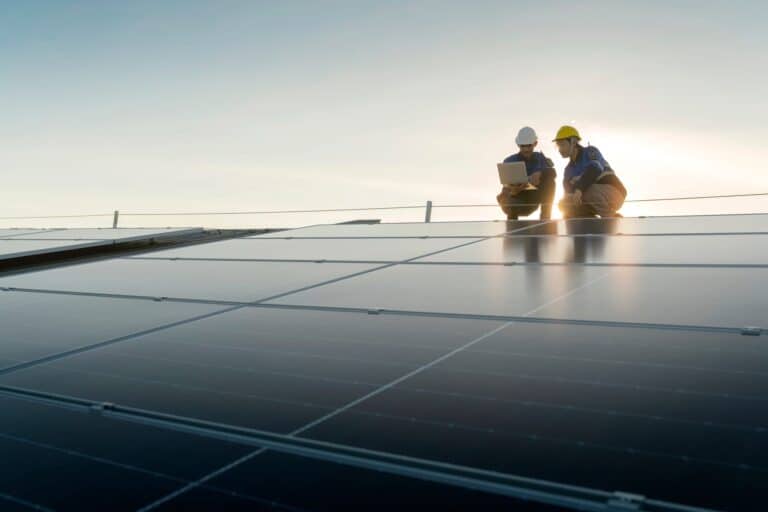Power prices are expected to soar under new tax cut and spending law
In states without policies to drive renewable energy, power prices could surge as federal tax incentives for clean energy disappear, according to Energy Innovation, a think tank.
Current Access Level “I” – ID Only: CUID holders, alumni, and approved guests only
Fact Sheet by Diana Hernández, Qëndresa Krasniqi & Alexandra Peek • October 26, 2023
Energy insecurity (EI)is defined as the inability to adequately meet household energy needs.
EI has three dimensions:[1]
Among all US households in 2020, 33.53 million experienced some form of EI. More specifically[2]
Although EI is widespread in the US, it is not equally distributed across all populations; disparities exist by race and ethnicity, income and wealth, and housing characteristics.[5]
Race and ethnicity. In 2020, Black and Indigenous populations were more than twice as likely as other groups to experience EI. Compared to 23 percent of white households, 52 percent of Black and American Indian or Alaska Native households experienced some form of EI (see Figure 1). Nearly half (47 percent) of Hispanic households experienced some form of EI compared to 25 percent of non-Hispanic households.[6]
Income and wealth. More than half (51 percent) of households making less than $20,000 a year reported experiencing energy insecurity in 2020. As Figure 1 shows, this percentage decreases steadily as income increases.[7] For example, households earning less than $20,000 a year were seven times more likely to experience EI than those making $100,000 a year or greater.[8]
Housing Characteristics. Renters were twice as likely as owners to experience EI—41 versus 20 percent. Furthermore, 47 percent of households living in poorly insulated homes, 51 percent of those using portable electric heaters as a main heating source, and about 40 percent of those using inefficient cooling (i.e., swamp coolers and window A/C units) experienced some form of EI.

Addressing EI requires improving the physical condition of housing and reducing cost burdens. Specific measures to be taken include:
[1] Diana Hernández, “Understanding ‘Energy Insecurity’ and Why It Matters to Health,” Social Science & Medicine 167 (October 1, 2016): 1–10, https://doi.org/10.1016/j.socscimed.2016.08.029.
[2] US Energy Information Administration (EIA), “2020 Residential Energy Consumption Survey,” accessed October 14, 2022, https://www.eia.gov/consumption/residential/data/2020/.
[3] Includes inability to use air-conditioning equipment at any time during the previous 12 months because equipment was broken and household could not have it repaired or because of an electricity disruption due to lack of payment.
[4] Includes inability to use main heating equipment at any time during the previous 12 months because equipment was broken and household could not have it repaired or because of an electricity, natural gas, or bulk fuel disruption due to lack of payment.
[5] EIA, “2020 Residential Energy Consumption Survey.”
[6] Ibid.
[7] Ibid.
[8] Carolyn Hronis and D Ross Beall, “Who’s Energy Insecure? Results from the 2020 Residential Energy Consumption Survey (RECS),” n.d., 16.
This report explores how residents of North Lawndale, a predominantly Black and historically under-resourced neighborhood on Chicago’s West Side, experience the compounded effects of heat waves and power outages.

Even as the U.S. pursues an energy agenda centered on achieving affordability through abundance, utilities and local governments have tools to help families navigate energy insecurities.

The Just Energy Transition Partnership (JETP) framework[1] was designed to help accelerate the energy transition in emerging market and developing economies (EMDEs) while embedding socioeconomic[2] considerations into its planning and implementation.

Full report
Fact Sheet by Diana Hernández, Qëndresa Krasniqi & Alexandra Peek • October 26, 2023